AWS Certified AI Practitioner
Fundamentals of AI and ML
Identifying Practice Use cases for AIML
Welcome students! In this lesson, we explore a wide range of practical applications for artificial intelligence (AI) and machine learning (ML). Discover how these transformative technologies are revolutionizing industries by enhancing classification, pattern matching, and prediction tasks.
AI in Healthcare
AI significantly impacts healthcare by assisting with medical diagnostics, analyzing X-rays, and predicting patient outcomes through efficient processing of large datasets.
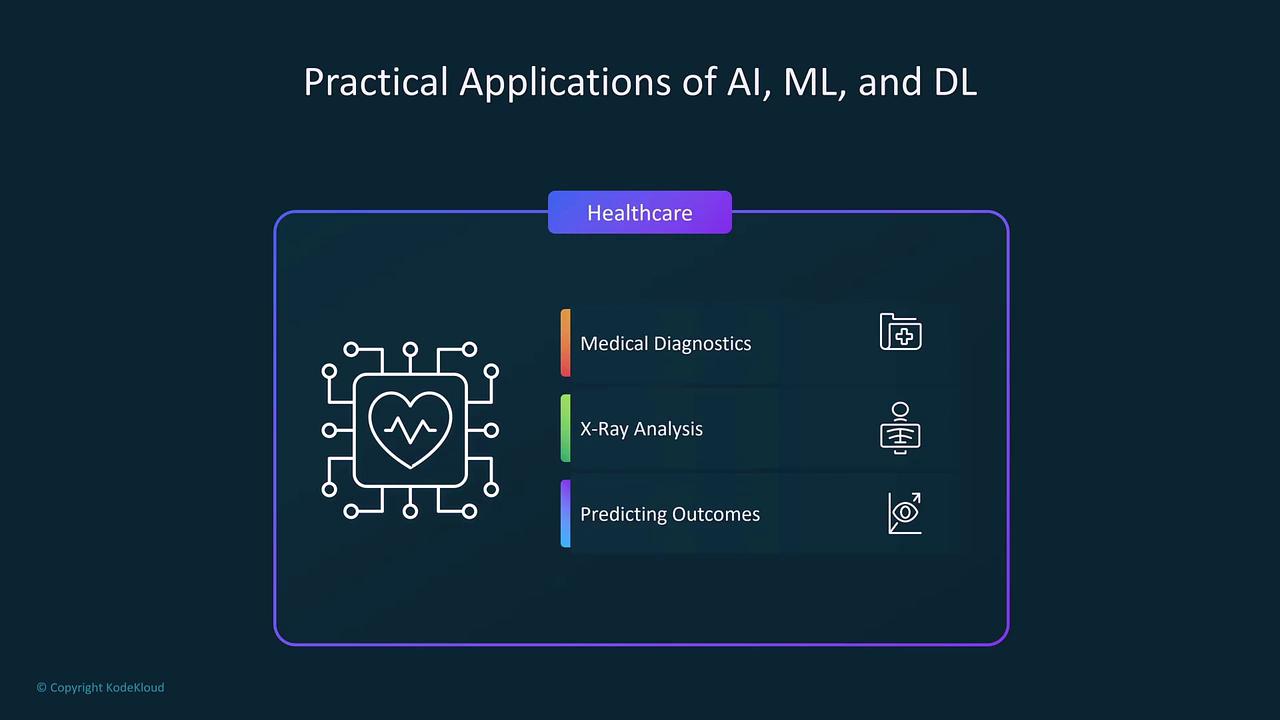
In healthcare settings, AI collates data from various sources including medical images, patient records, and genetic information. This integrated approach not only supports diagnostic accuracy but also reduces the cognitive load on medical professionals by highlighting subtle patterns that may be overlooked.
Note
AI-driven diagnostics are transforming patient care by providing early detection and personalized treatment recommendations.
AI in Finance
While AI is designed to assist rather than completely replace human intervention, it plays a vital role in fields like fraud detection and personalized financial advice. By automating repetitive tasks and identifying anomalies in transaction data, AI ensures enhanced consistency and speed in financial operations.
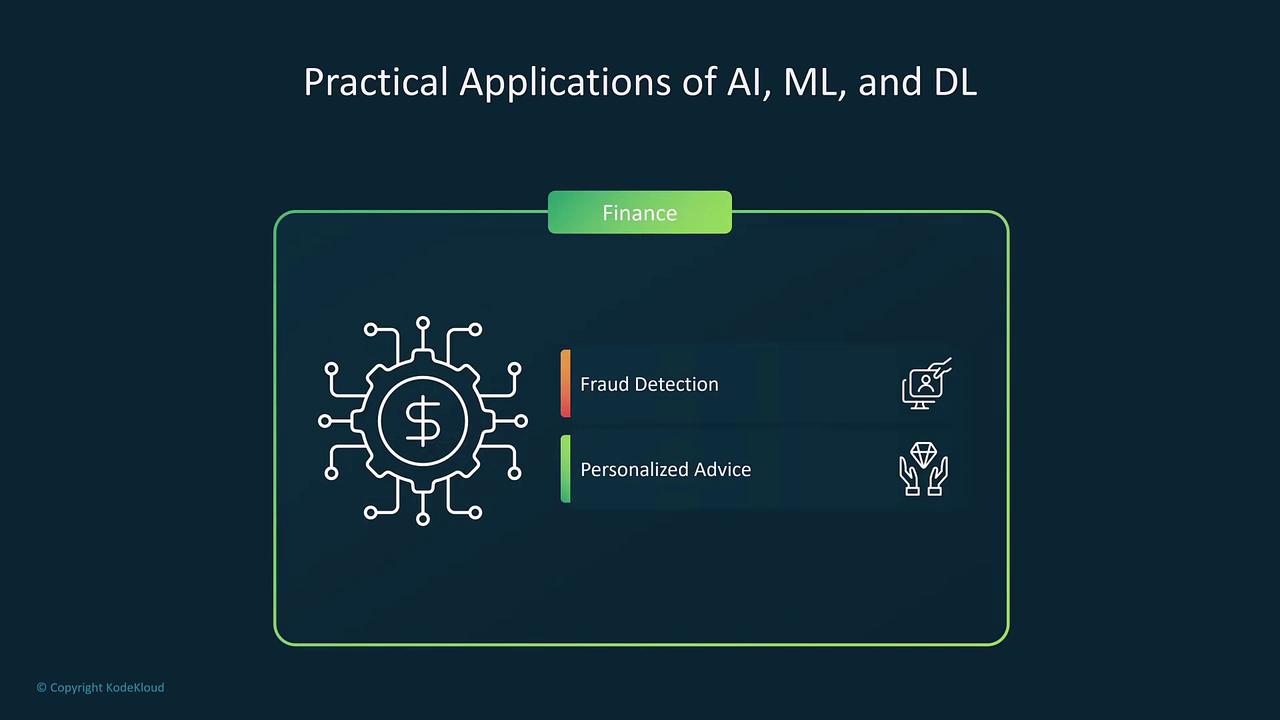
Many banking systems rely on AI to monitor transactions continuously. AI distinguishes between normal and suspicious activities by analyzing millions of transactions in real time, adapting and improving its accuracy over time.

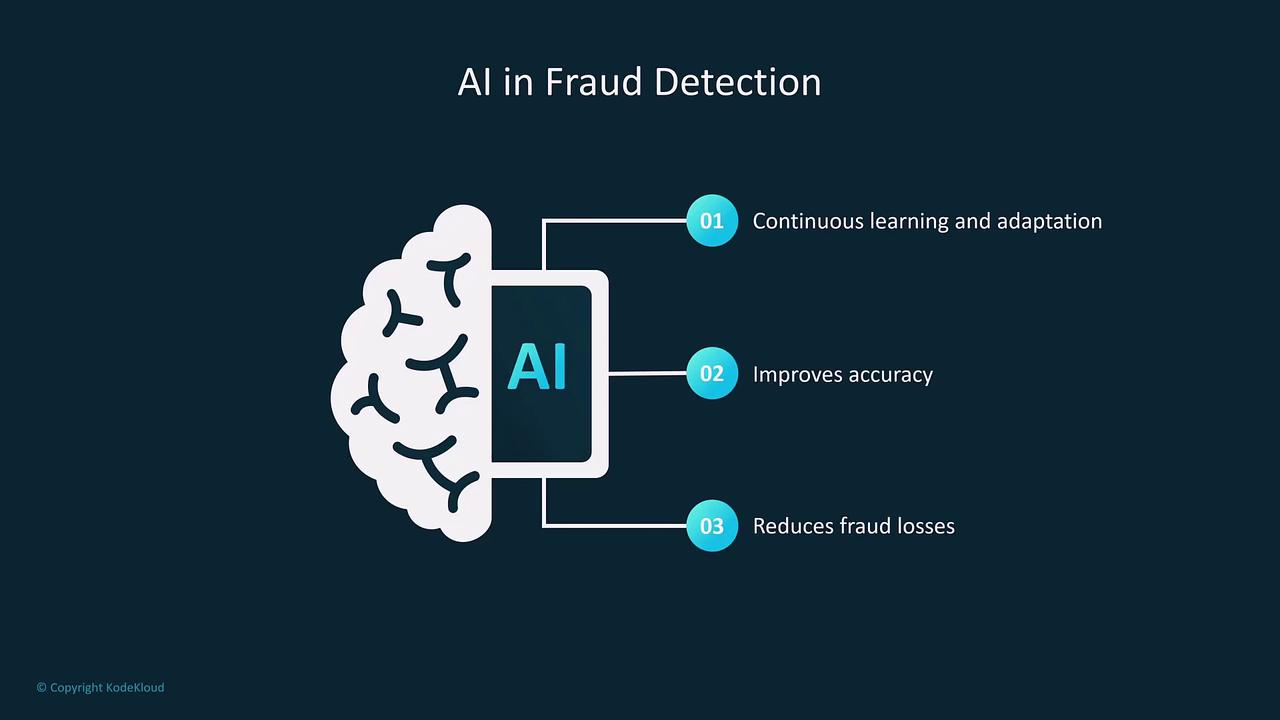
AI in Manufacturing
In manufacturing, AI enhances operational efficiency by detecting defects, performing predictive maintenance, and assisting with capacity planning. These capabilities not only improve product quality but also streamline production processes.
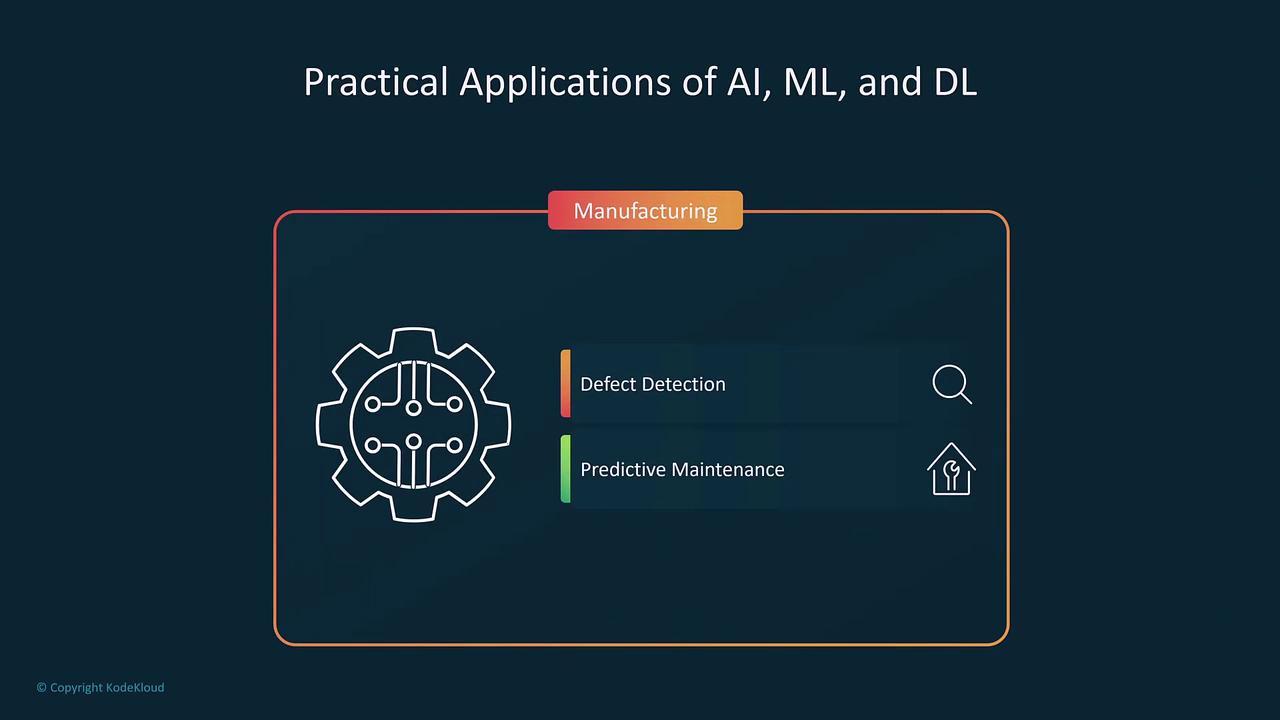
Additionally, AI-driven robotics are transforming industrial operations—from automating assembly lines and warehouse sorting to package delivery and refining production rates.
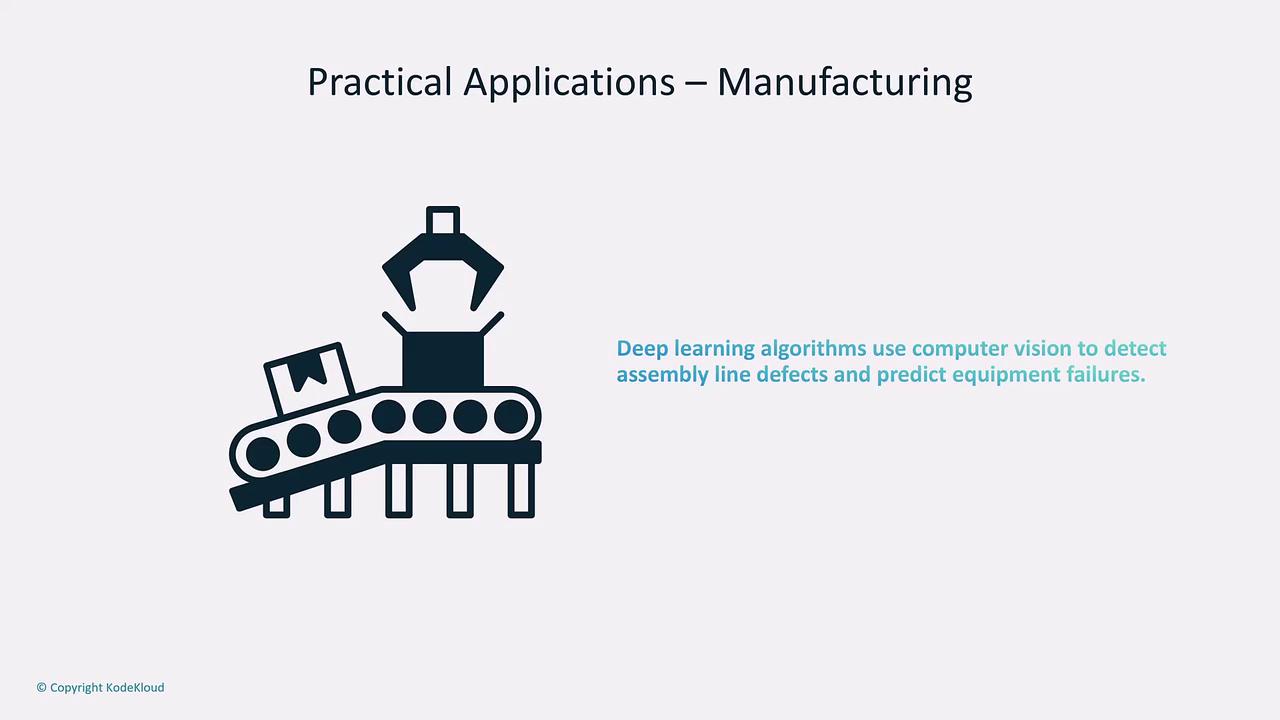
Enhancing Customer Service with AI
Customer service automation employs AI-powered chatbots to handle routine inquiries about account balances, shipping statuses, and refund requests. Utilizing natural language processing (NLP), these chatbots interact in a human-like manner, streamlining support and allowing human agents to focus on more complex issues.

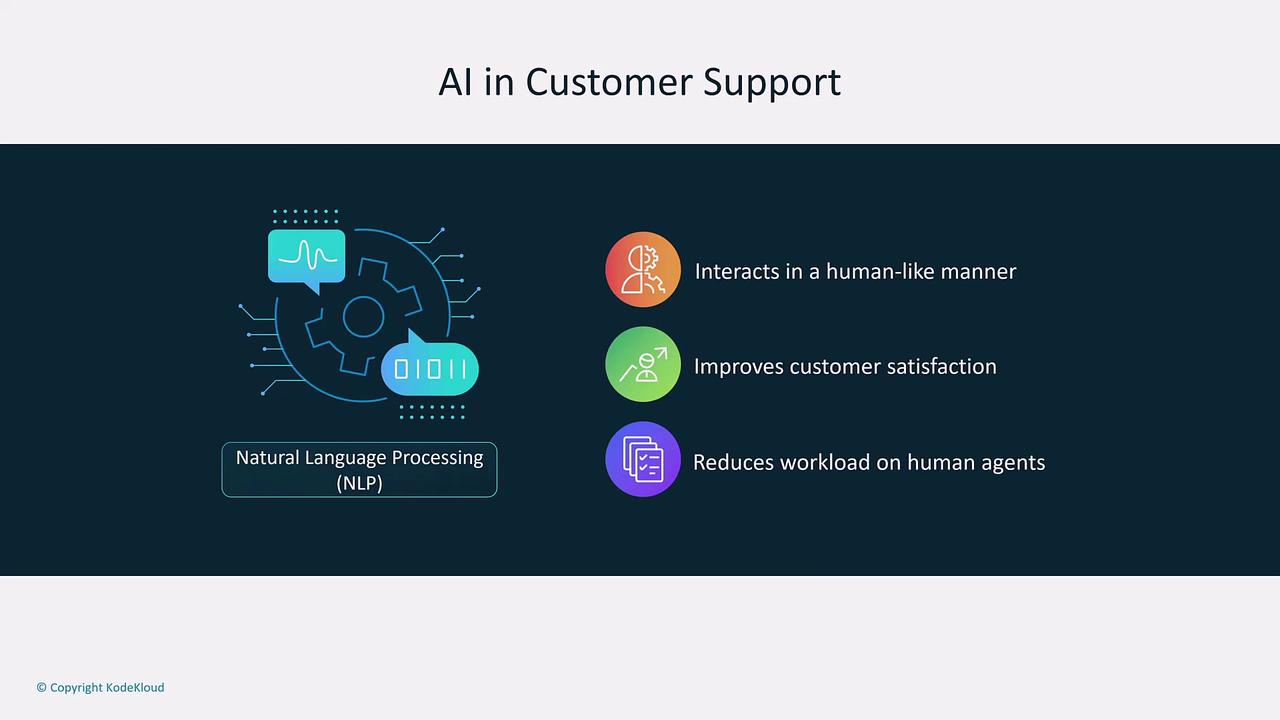
Predictive Maintenance and Demand Forecasting
Predictive maintenance is another key application where AI analyzes data from IoT sensors embedded in machinery to predict failures and schedule maintenance during planned downtimes. This proactive method minimizes unexpected equipment failures and unnecessary costs, benefiting industries from manufacturing to aviation.
Beyond maintenance, AI-driven demand forecasting utilizes historical sales data and consumer trends to accurately predict inventory requirements and optimize supply chains.
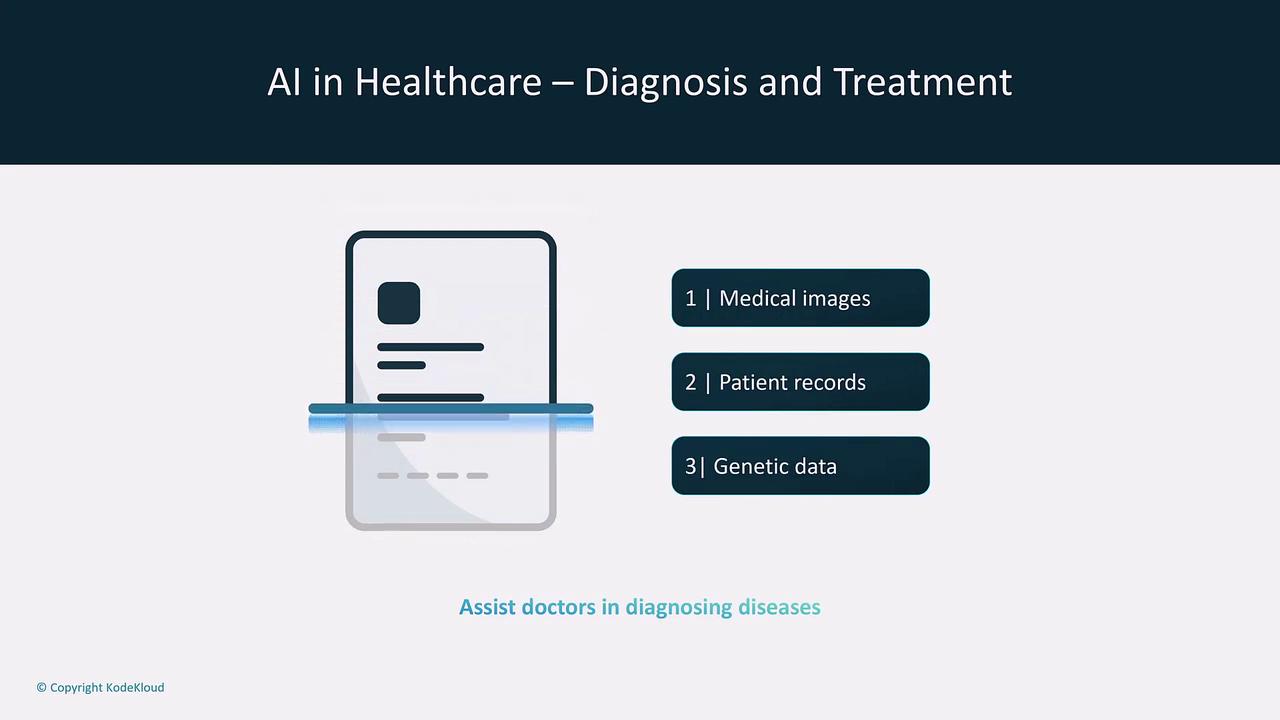
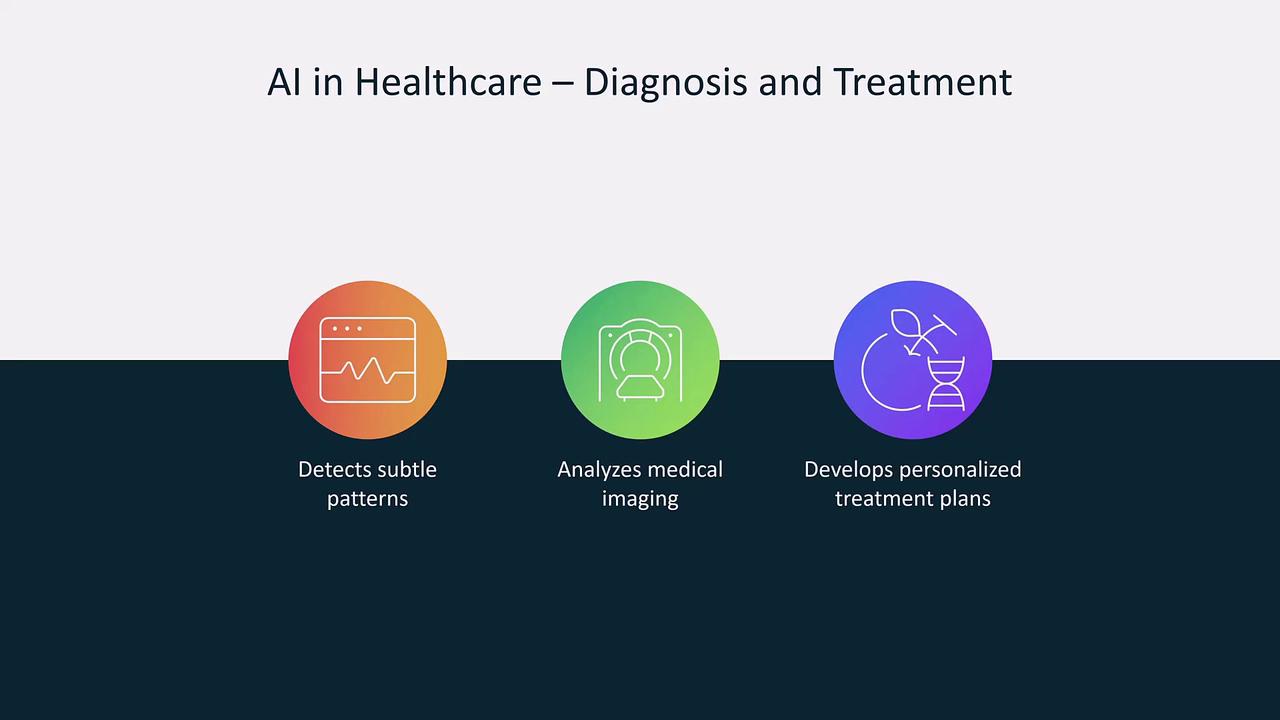
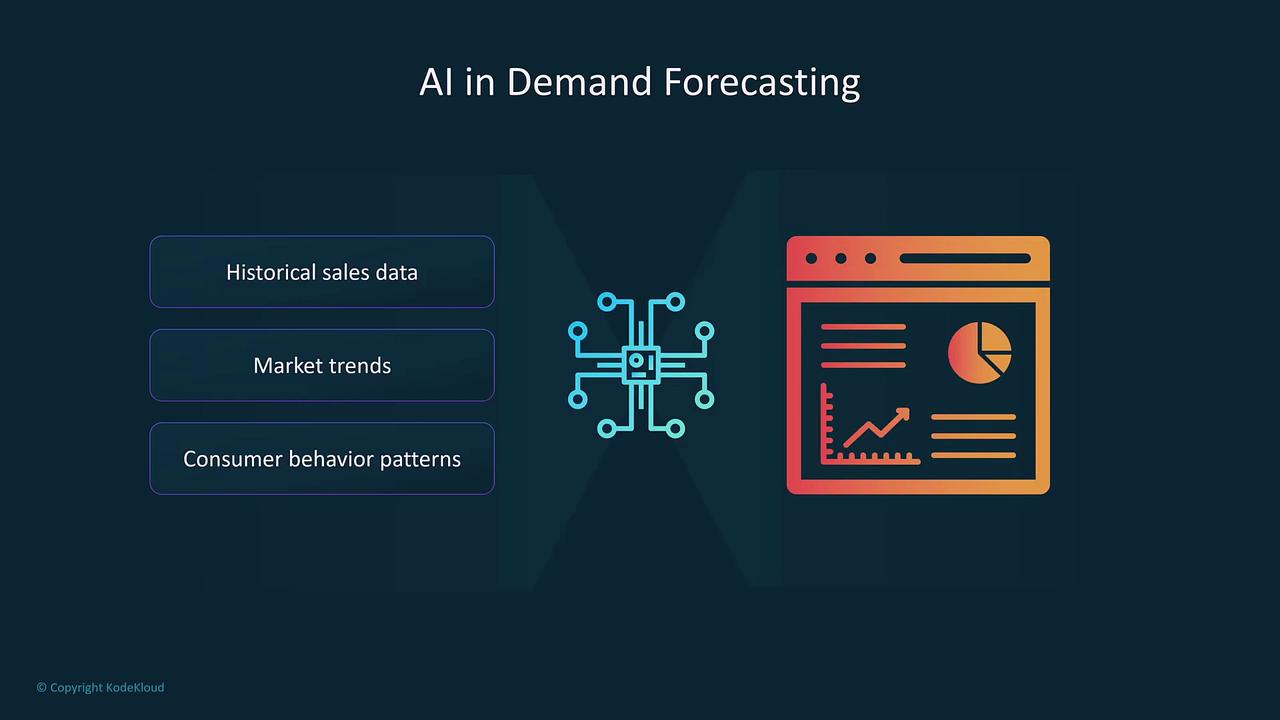
AI in Autonomous Vehicles and Agriculture
Autonomous vehicles showcase AI in action by analyzing data from sensors, cameras, radars, and road conditions to navigate complex environments in real time. For example, Tesla's autopilot system uses AI for obstacle detection, traffic signal recognition, and autonomous parking.

In agriculture, AI optimizes planting schedules, harvest times, and resource management by analyzing weather data, soil conditions, and crop health. Advanced applications even integrate data from IoT devices and AI-powered drones to enhance pest detection and prevent diseases.
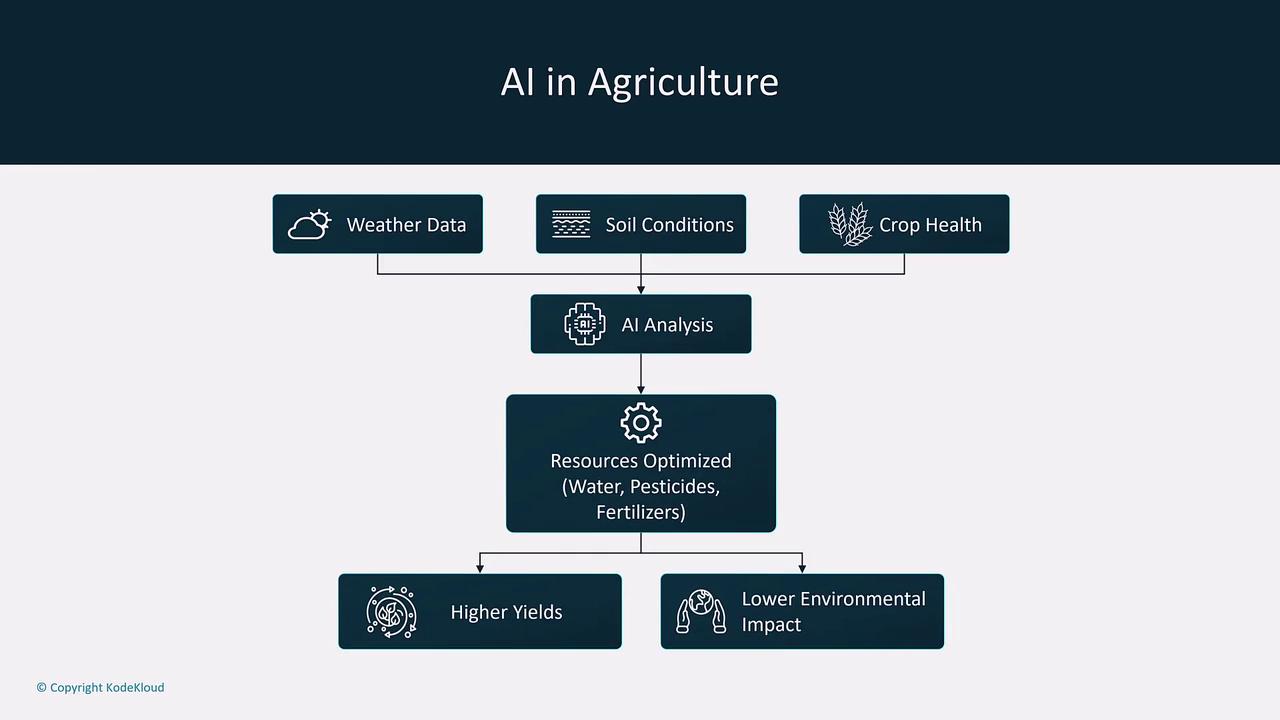
AI in Daily Life
From personal virtual assistants and streaming services to online shopping recommendations, AI enhances daily life by providing accurate suggestions based on past behavior, streamlining customer interactions, and improving device interoperability.
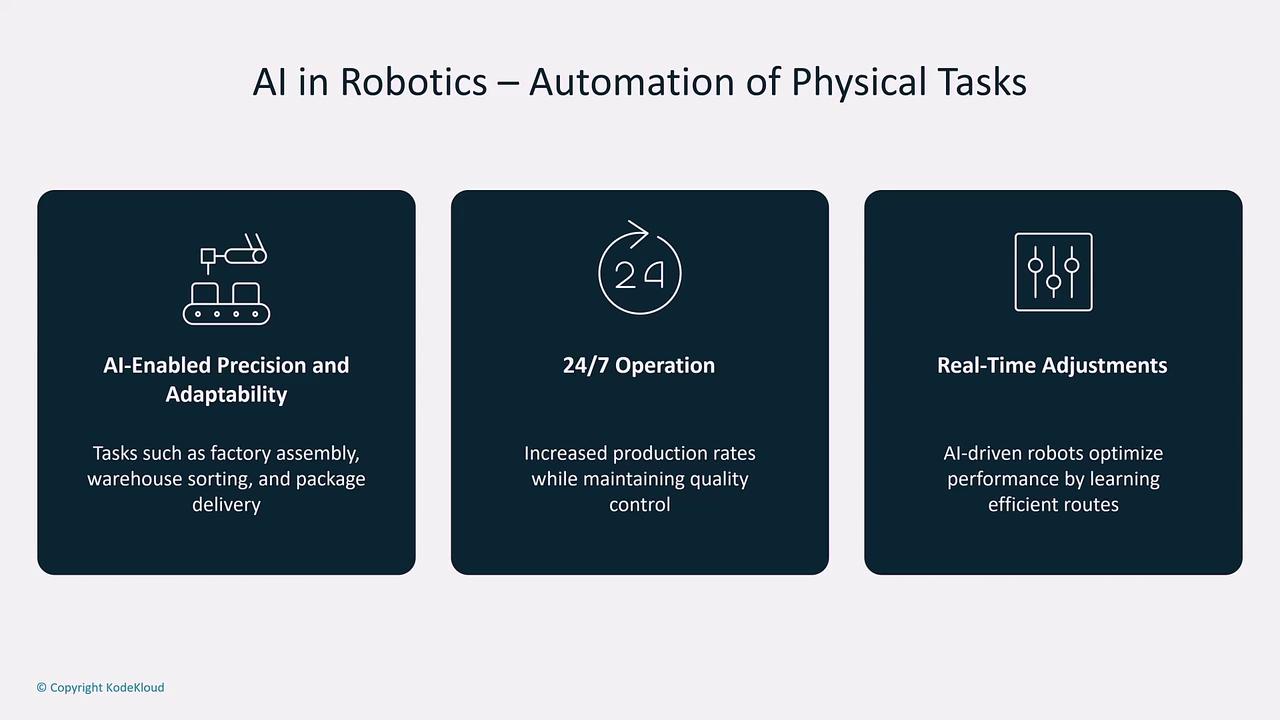
Challenges and Limitations of AI
Despite its benefits, integrating AI presents challenges. The significant computational power required for training models, along with the necessary resources for data storage, cloud services, and skilled personnel, must be carefully considered.
Warning
When implementing AI solutions, be aware of limitations such as the "black box" problem, potential biases, and hallucinations in outputs. Transparency and accountability are crucial, especially in sensitive areas.
Final Thoughts
AI, ML, and deep learning offer transformative capabilities across sectors. By enhancing efficiency, reducing errors, and boosting customer experiences, AI becomes an indispensable tool for modern businesses. However, successful implementation hinges on aligning the right technology with the specific use case while considering the inherent challenges.
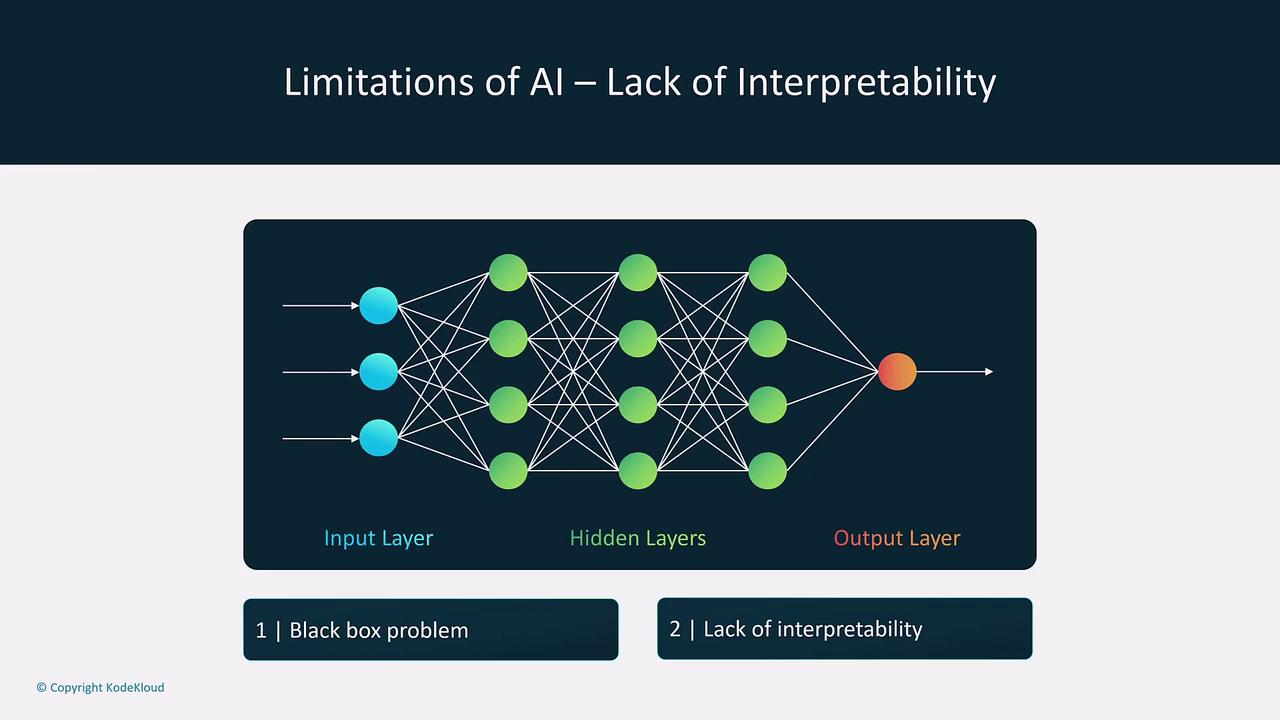
That concludes our exploration of practical use cases for AI, ML, and deep learning. We hope this lesson has provided a clear and SEO-friendly overview of how these technologies are applied across industries, along with the key considerations for their successful implementation. See you in the next lesson!
Watch Video
Watch video content